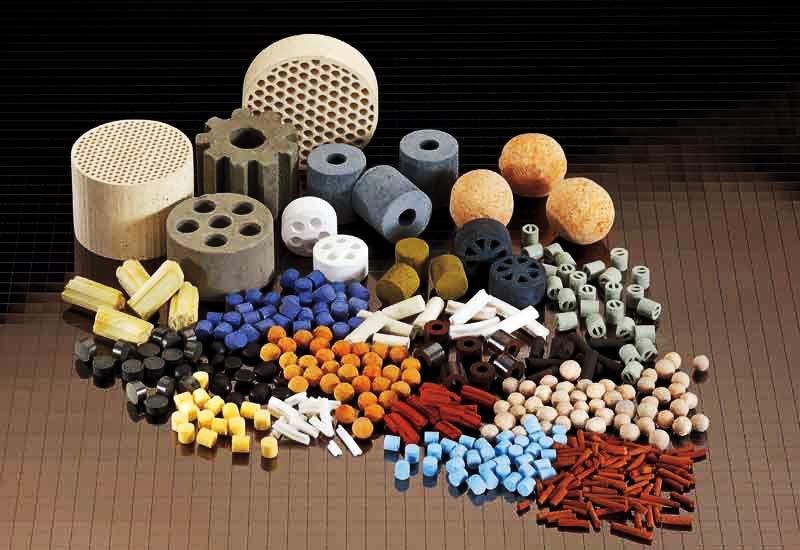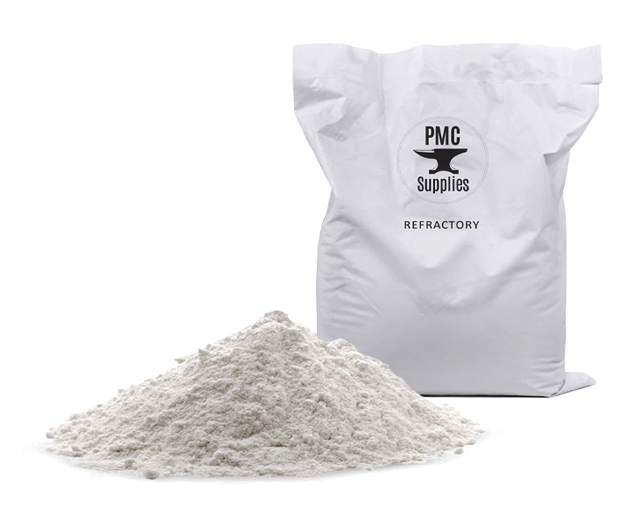Catalysts
Catalysts play an essential role in biological systems and industrial processes. In living organisms, enzymes catalyze countless biological reactions that enable survival, reproduction, and growth. In industry, catalysts are used for a wide array of production processes, including the production of ammonia, sulfuric acid, polymers, and substitutes for petroleum products.
According to some estimates, 80% of all manufactured products produced commercially require catalysts at some stage of production. Some examples of catalysts application in industrial processes are as follows:
- Catalytic converter in the automotive industry
- Haber process for the synthesis of ammonia from nitrogen and hydrogen
- Ziegler- Natta catalysts for producing polyethylene or polypropylene
- Catalysts for producing concentrated sulfuric acid by contact process
- Catalysts of the cracking process for the breakdown of large hydrocarbon molecules into smaller or simpler molecules
- Fischer-Tropsch process for producing a mixed petroleum substitute for lubrication oil or fuel
- Hydrogenation process
- And many other industrial chemical processes.

Although some catalytic materials consist of a single component, in most catalysts, three components are easily recognizable: active components, catalyst carrier or support, and promoters.
The carrier act as a stable surface on which the active ingredient is dispersed in such a way that the agglomeration is reduced. Another important task of the support is to maintain a high surface area for the active component, and they are used to spread materials over a large area. These materials are chosen to form a rough and irregular surface as a catalyst carrier, which increases the surface area to some extent compared to the smooth surface, which leads to an increase in the catalytic active surface.
The carrier not only provides a large surface area but also affects the activity and selectivity of the active components of the catalyst and may even catalyze the reaction itself. The carrier must maintain its surface area to prevent particle agglomeration even at high temperatures. The carrier must be protected from thermal growth, which means a high melting point (at least higher than one of the active ingredients).


Ceramic materials have a porous structure and they can allow easy movement of reactants and products of a reaction around the active surfaces so they are excellent materials for use as catalyst carriers. They also possess good mechanical stability and chemical inertness. Ceramic materials can be used as an active component but they are mostly used as catalyst carriers.
Among ceramic materials, aluminum oxide (Al2O3) or alumina holds a special place in the catalyst industry. Alumina is the most important carrier for refinery catalysts. Many catalyst supports are made of alumina. Alumina is used as the carrier of many catalysts in refinery, petrochemical and chemical reactors. For example, in refining industries, reforming catalysts (catalytic conversion), hydrotreating and hydroconversion.
ALPHA offers different grades of calcined alumina with various particle size distributions, soda content and specific surface area suitable for use in the catalyst industry.
The meticulous manufacturing process leads to complete control of products' properties and a suitable product for every technical ceramic.
ALPHA

